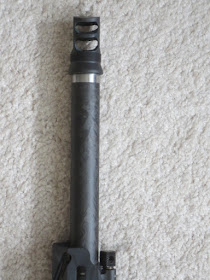I
have owned a variety of firearms over the last 20 something years, both
antique, family heirloom guns and modern guns I’ve purchased myself. I’m not a
brand or caliber fanboy. I’ve had steel and plastic, cheap and expensive, big
and small including Taurus revolvers and semi autos, a Rossi .357 Magnum with a
2.5 inch barrel, a Glock 23, Smith & Wesson M&P full size, Smith &
Wesson revolvers in .44 Magnum and .45 Auto and a Sig Sauer government sized
1911 just to name a few of the notables across the spectrum. They all have
their pluses, minuses, trade-offs and compromises.
Here
lately, current circumstances and future plans have me thinking and rethinking
my preferences on firearms in general and handguns specifically. The lens
through which I have been processing my thoughts is this: if I had to choose
only 1 gun (maybe 2) to rely upon, what would give me the most “bang for my
buck” and cover the broadest range of potential uses?
Warren Buffet has been quoted as saying “Price is what you
pay, value is what you get.”
Current thinking by a lot of reputable firearms
instructors/trainers is that a mid to full sized polymer double stack in 9mm is
the best for the least. The general consensus on the reasons for this choice is
that 9mm is cheap and as effective as other calibers in modern loadings
allowing for more training, you can carry more 9mm than other calibers, polymer
guns are cheap and easier to maintain, etc. But, is that really the best value?
Perhaps. Perhaps not.
Sheriff Jim Wilson relates a story about Bill Jordan’s
opinion on the subject (http://sheriffjimwilson.com/2012/07/25/if-you-can-shoot/).
Bill’s take? A Smith & Wesson Model 19. Does that opinion (and Bill’s basis
for same) make it the best? Again, perhaps. Perhaps not.
For hunting, you need minute of vitals accuracy and
sufficient power to penetrate hide and bone to reach vital organs for a quick
and ethical kill. For training new shooters, you need simplicity, safety, low
recoil, ease of use…. For home defense, you need accuracy and a delicate
balance of power without excessive penetration. For competition, you need
accuracy, and…. You get the point. Each potential use has different and
potentially conflicting needs.
Being a student of history, I was also intrigued by Old NFO’s
offering from this morning (https://oldnfo.org/2016/12/02/interesting-tidbit-2/)
copying the Saturday Evening Post interview of Wyatt Earp in 1931. First, can
you imagine a publication like the Saturday Evening Post publishing such an
interview today? Times have changed, and the mind boggles. Second, it is a
truism that history is written by the winners. They won for a reason, and wise
people learn from their success.
Please allow me to excerpt a few of the highlights for your
consideration (text bolded for emphasis – ed.).
“Those
old-timers took their gunplay seriously, which was natural under the conditions
in which they lived. Shooting, to them, was considerably more than aiming at a
mark and pulling a trigger. Models of
weapons, methods of wearing them, means of getting them into action and
operating them, all to the one end of combining high speed with absolute
accuracy, contributed to the frontiersman’s shooting skill. The
sought-after degree of proficiency was that which could turn to most effective
account the split-second between life and death. Hours upon hours of practice, and wide experience in actualities
supported their arguments over style. The most important lesson I learned
from those proficient gunfighters was the winner of a gunplay usually was the
man who took his time. The second was that, if I hoped to live long on the
frontier, I would shun flashy trick shooting — grandstand play — as I would
poison. When I say that I learned to take my time in a gunfight, I do not wish
to be misunderstood, for the time to be taken was only that split fraction of a
second that means the difference between deadly accuracy with a six-gun and a
miss.”
“From
personal experience and numerous six-gun battles which I witnessed, I can only
support the opinion advanced by the men who gave me my most valuable
instruction in fast and accurate shooting, which was that the gun fanner and hip-shooter stood small chance to live against a man
who, as old Jack Gallagher always put it, took his time and pulled the trigger
once.”
“In the days of which I am talking, among men
whom I have in mind, when a man went
after his guns, he did so with a single, serious purpose. There was no such
thing as a bluff; when a gunfighter reached for his forty-five, every faculty
he owned was keyed to shooting as speedily and as accurately as possible, to
making his first shot the last of the fight. He just had to think of his
gun solely as something with which to kill another before he himself could be
killed.”
The short answer is that the best value in a “jack of all
trades” firearm will vary from person to person based on their individual needs.
No internet expert can tell you what will work best for you and your needs, and be aware that gimmicks
and trends come and go. But, when it comes to the value of a firearm, Wyatt Earp has one last gem of wisdom: "Fast is fine, but accuracy is final."
Find the gun you can shoot comfortably and accurately, buy
ammo, and then practice.






















